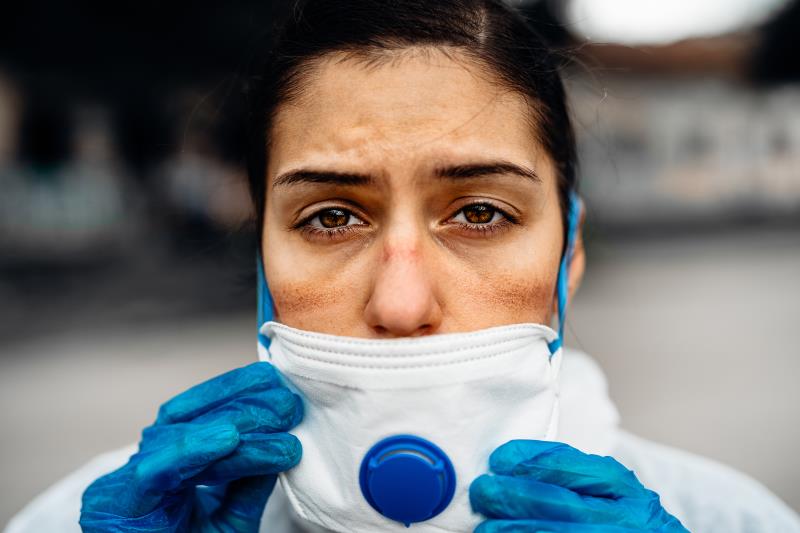N95 refit testing needed when used with protective facial dressings





Amidst concerns that the use of protective facial dressings may compromise the seal between N95 respirator and the face, doctors in Singapore advise that healthcare workers (HCWs) with such dressings should undergo repeat fit testing to ensure that the seal remains intact.
“We strongly recommend that a repeat fit test be performed if a HCW intends to use protective facial dressings while wearing a N95 respirator,” urged Drs Daphne Li and Delice Lee from National University Health System (NUHS), Singapore, in a published letter.
In NUHS, HCWs who used protective dressings on their face while donning N95 masks were offered a refit testing with denatonium benzoate aerosol spray, in accordance with the hospital protocol, the authors explained. [Occup Environ Med 2020;doi:10.1136/oemed-2020-106621]
Among 43 HCWs who underwent refit testing, all passed the test, except for one worker who used an adhesive dressing across the nasal bridge.
Of the dressings used, adhesives across the nasal bridge were the most common type (by 41 HCWs), while absorbent foam dressing on the cheeks was applied on one HCW and another used both.
“Although it is reassuring that all but one HCW passed the N95 respirator qualitative refit test, our study is limited by the small number of participants,” said Li and Lee, who emphasized that a fit test should be repeated for HCWs using protective facial dressings with N95 respirators.
Pain in the face
Prolonged use of the N95 mask predisposes HCWs to device-related pressure ulcers (DRPU) on their face, as experienced by many frontline HCWs working in critical care units. Based on a recent survey of 526 frontline HCWs, the prevalence of DRPU-related skin damage was as high as 83.1 percent and 78.7 percent on the nasal bridge and cheek, respectively. [J Am Acad Dermatol 2020;82:1215-1216]
Development of DPRU on the face can add physical and psychological stressors to HCWs, according to the authors.
While there were studies on prevention and treatment of DPRU, these were mainly focused on patients and data in HCWs are limited, they noted. As a result, HCWs have devised ways of repurposing dressings available in the institution.
“As we progress through this pandemic, HCWs have become more aware of the risks of DRPU. Many have been proactive about seeking solutions from social media and each other in order to continue working in a safe manner,” said Li and Lee.
“[However,] there was a worry that these dressings might interfere in the formation of a good seal between the face and the N95 respirator,” they added.
In fact, manufacturers of N95 respirators advised against the use of facial dressings when a proper seal between the respirator and the face could not be ascertained, the authors pointed out.
The UK National Health Service also discouraged the use of dressings underneath N95 mask unless certain criteria are met — such as dressings that are as thin as possible, ideally with a tapered edge. The guide also highlighted the importance of a repeat fit testing of N95 mask if used with dressings.
“There exists room for more research into the development of skin protective devices that maintain the N95 respirator seal efficacy without compromising skin integrity and comfort,” stated Li and Lee.